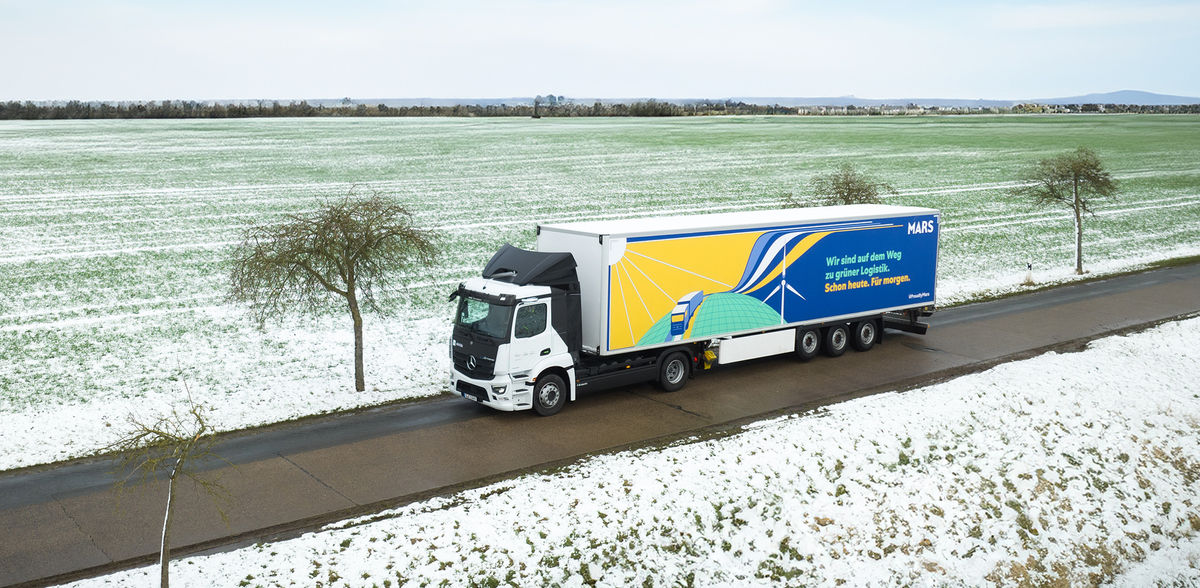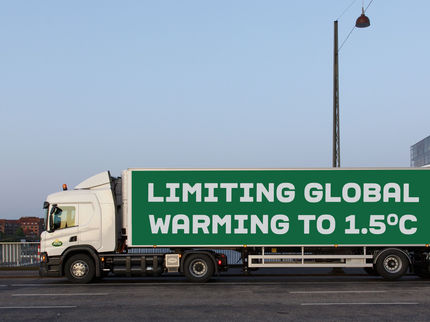Mars Logistik focuses on electromobility - project launch in Germany
Mars and Einride to put 300 electric trucks on the roads across Europe by 2030
The Mars company announced today at the International Green Week in Berlin that it is pressing ahead with the climate-friendly transformation of its logistics. In cooperation with the Swedish freight technology company Einride, which offers digital, electric and autonomous technologies for freight transport, 300 electric trucks will be put into operation across Europe by 2030. Mars expects the switch to result in an annual reduction in CO2 emissions of 20,000 tons, which corresponds to a reduction in greenhouse gas emissions from Mars Logistik in Europe of around 10 percent per year.
The joint project was launched in Germany in mid-January 2024 and further routes in Germany, the UK and the Netherlands will follow this year. These fully electrified transport operations will be complemented by a further pilot project with autonomous vehicles, which will be introduced in 2025.
The expansion of electric transportation networks is part of Mars' global commitment to reduce its emissions to net zero across the value chain by 2050. Mars, Incorporated aims to halve its emissions (Scope 1 to 3) by 2030. [1] To this end, Mars is investing 1 billion US dollars globally over the next three years. The reorganization of logistics is making a contribution.
Barry Parkin, Chief Procurement and Sustainability Officer at Mars, Inc. said: "The collaboration with Einride demonstrates how we are working closely with partners and leveraging our collective power to drive change today for a more sustainable future. This investment is an example of how we are implementing the actions outlined in the Mars Net Zero Roadmap by improving and optimizing logistics. Together, we are driving change and demonstrating our commitment to sustainability at scale."
Launch of the Mars Einride cooperation in Germany in January 2024
In mid-January, Mars launched the electrification of its transport route between the Pet Nutrition factory and office location in Verden (Lower Saxony) and its logistics center in Minden (North Rhine-Westphalia). Einride provided Mars with two 40-ton Mercedes-Benz eActros 300s and two charging stations with a total of four charging points, which are operated by Einride's Saga operating system. Mars is investing a mid-six-figure euro sum in the installation.
The use of the two electric trucks on the one-way route Verden - Minden (91 km) is estimated to save 400 tons of CO2e per year. Mars will switch to green electricity at both charging locations from October 2024. CO2 emissions from operating the two trucks will then be reduced to zero across the entire energy chain (well-to-wheel).
Björn Schlenker, Mars Market Supply Chain Director Germany: "Transformation needs strategic partnerships like our cooperation with Einride. We are driving forward the expansion of climate-friendly logistics and are closely integrating Einride in order to electrify further routes, such as the route to our chocolate factory in Viersen. The Mars-Einride cooperation in Germany is a big step and the start of our large-scale plan over the next few years."
Einride enables companies to switch to sustainable road freight transport using digital, electric and autonomous technologies. The Freight Capacity as a Service (FaaS) offering consists of the use of connected electric vehicles from leading Original Equipment Manufacturers (OEMs), autonomous vehicles and Einride Smartchargers, all powered by the Einride Saga operating system. Saga uses data-driven insights and real-time updates to optimize routes, reduce energy consumption, automate charging schedules, maximize battery life, track and map emissions reductions and minimize transportation costs.
Robert Ziegler, General Manager Europe at Einride, on the cooperation: "To create sustainable logistics, we need to drive decarbonization in the transport sector. This partnership is a good example of how Mars is committed to this and is taking active action. Together, we are introducing an intelligent freight system that reduces emissions, increases efficiency and demonstrates a commitment to sustainability on a large scale."
[1] Mars, Incorporated has set a goal to reduce its greenhouse gas emissions by 50% by 2030 and 80% by 2050 compared to a 2015 baseline, and to reach net zero by 2050 by offsetting the remaining amount of greenhouse gases with high-quality carbon credits.
Note: This article has been translated using a computer system without human intervention. LUMITOS offers these automatic translations to present a wider range of current news. Since this article has been translated with automatic translation, it is possible that it contains errors in vocabulary, syntax or grammar. The original article in German can be found here.































































